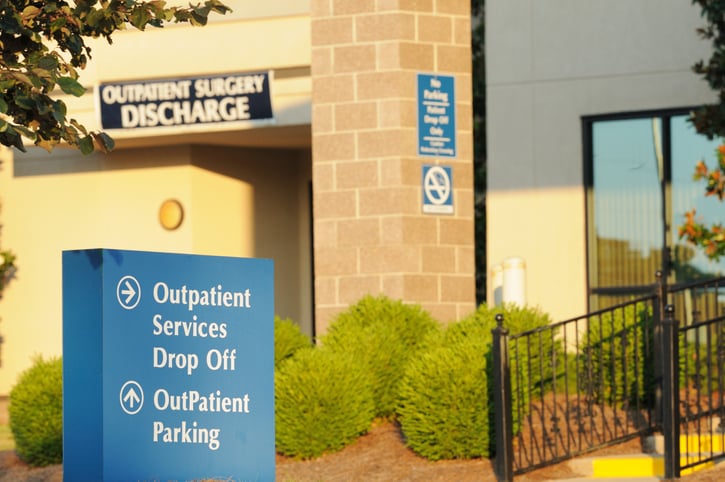The Centers for Medicare & Medicaid Services’ annual pay rate proposal for outpatient and ambulatory surgical centers (ASCs) includes a step toward site-neutral payments, a broader list of services eligible for outpatient reimbursement, updates to hospital price transparency rules and several quality rating methodology updates.
“We are advancing our mission to protect Medicare and its beneficiaries, fight fraud and empower patients with access to the latest innovations, all while holding providers accountable and ensuring taxpayer dollars are spent wisely,” CMS Administrator Mehmet Oz, M.D., said in a Tuesday afternoon release. “These reforms expand options and enforce the transparency Americans deserve to ensure they receive high-quality care without hidden costs.”
The Calendar Year 2026 Outpatient Prospective Payment System (OPPS) and ASC Payment Systems proposed rule is headlined by a 2.4% proposed payment rate increase for hospitals that meet applicable requirements for quality reporting. It reflects a projected 3.2% hospital market basket increase and a required productivity adjustment of 0.8 percentage points, and is estimated to increase OPPS expenditures approximately $8.1 billion over 2025’s estimated payments.
ASC rates for the upcoming calendar year are proposed to rise 2.4%, reflecting the 3.2% market basket increase of the Inpatient Prospective Payment System and a 0.8 percentage point productivity adjustment. This would be an increase of about $480 million over the 2025 ASC Payment System’s estimated payments, CMS estimated.
The 913-page proposed rule comes with its fair share of potential policy changes, which the agency said in a release are intended to reduce beneficiaries’ out-of-pocket costs, expand care choices, increase hospital transparency and clamp down on waste and abuse of Medicare funds. Those proposals will “deliver savings for both the Medicare program and beneficiaries, estimated at nearly $11 billion over the next 10 years,” CMS wrote.
In the proposed rule, CMS said it wants to expand a 2019 policy that kept Medicare and beneficiaries from paying “significantly more” for certain services furnished in excepted off-campus provider-based departments than in physician offices. Now, CMS is proposing to apply the Physician Fee Schedule payment rates for a broader swath of services at these settings—specifically, those for Healthcare Common Procedure Coding System codes assigned to the drug administration ambulatory payment classifications.
Further, CMS wants to phase out the Inpatient Only List, a collection of services that can only be reimbursed by Medicare in an inpatient setting, over the next three years. That effort will start with 285 “mostly musculoskeletal procedures” in the coming year, most of which will be added to the ASC Covered Procedures List, according to a fact sheet.
Citing the executive order signed by President Donald Trump in February, CMS also proposed updating hospital price transparency regulations. Starting Jan. 1, 2026, CMS would require hospitals to include the tenth, median and ninetieth percentile allowed amounts in machine-readable files in cases where payer-specific negotiated charges are based on percentages or algorithms “to more accurately reflect the distribution of actual prices that the hospital has received for an item or service,” according to the fact sheet.
CMS is also proposing to require hospitals attest they have included dollar amounts when able, or otherwise include “all necessary information available to the hospital for the public to be able to derive the dollar amount” in the machine-readable file, the agency said. Other proposals relate to how hospitals encode their price and national provider identifiers and offer a discount on civil monetary penalties for noncompliance should hospitals waive the right to a hearing by an Administrative Law Judge.
“We are building on our efforts to modernize Medicare payments by advancing site neutrality, simplifying hospital billing, and ensuring real prices—not estimates—are available to patients,” Chris Klomp, deputy administrator and director of the Center for Medicare at CMS, said in a release. “These changes help make hospital care more predictable, accountable, and affordable.”
The methodology to calculate Overall Hospital Quality Star Ratings is also in line for a change the agency said will help prioritize patient safety. The two-part proposed update will cap hospitals at a four-star rating should they rank in the lowest quartile for the Safety of Care measure group in the 2026 calendar year. Then, starting in the 2027 calendar year, hospitals in the lowest quartile for the Safety of Care measure group would face a blanket one-star reduction (with one star remaining the lowest possible score).
Several other quality rating programs were flagged for changes in the proposed rule, including the Hospital Outpatient Quality Reporting Program, the Rural Emergency Hospital Quality Reporting Program and the Ambulatory Surgical Center Quality Reporting Program. These include the removal of “burdensome health equity and COVID vaccine reporting requirements,” CMS said. A request for information covering the same programs also seeks public input on tools and measures related to well-being and nutrition, as well as on tools and frameworks to promote healthy habits.
CMS’ fact sheet on the proposed rule noted changes to skin substitute product payments that, among other shifts, would group and pay for them in line with their regulatory status; a bar on Graduate Medical Education accreditors requiring diversity, equity and inclusion programs; expanded coverage of non-opioid pain relief treatments; updated Medicare payments for partial hospital program services; and more public feedback on covering software as a service technologies under OPPS.
The proposed rule is scheduled to be published in the Federal Register on July 17 and will have a 60-day public comment period.
Publisher: Source link










